Jordan Fehr and Damian Kastbauer have put out a wonderful sound library together of Buttons, Gear, Equipment and Ambiences. You may recognize Jordan from his work on such wonderful games as: Hotline Miami, Donkey Kong Country Returns, Super Meat Boy and Binding of Isaac. Damian is no stranger to Designing Sound and to the online audio community. He has worked as a Technical Sound Designer on fantastic titles such as: Uncharted 3, The Force Unleashed II, and Dead Space 3.
DS: Tell us a bit about the libraries and why you decided to record these specific subjects.
Jordan Fehr: I am often times called upon to work on projects with zero extra money for exploratory recording time like field recording or extensive Foley work, and so a lot of my recording is done during downtime to beef up my custom libraries for my own use. The libraries I have released so far under JFFX have been useful ingredients I knew anyone could use, or in the case of the restored industrial engines, a very unique source material that only a few people have access to. This new library began with me recording simply buttons and switches for UI and Foley to use in my video game work, and I will not pretend it had nothing to do with purchasing a Schoeps-MK4 which is able to achieve a detailed high-end for these tiny sounds. As I started thinking more about the usage of the sounds I was recording, I decided to turn the library into a sort of Foley grab-bag of sounds that would accompany a situation with a lot of buttons and switches. Take a spy story for example: lots of gear and equipment with detailed foley to help suck you into the character’s busy work. A lot of the thinking was geared towards video game work once Damian approached me with his part of the library because I knew that the mono machines were perfect for 3D actors in modern game editors, but that is not to say that these sounds aren’t perfect for linear media work as well.
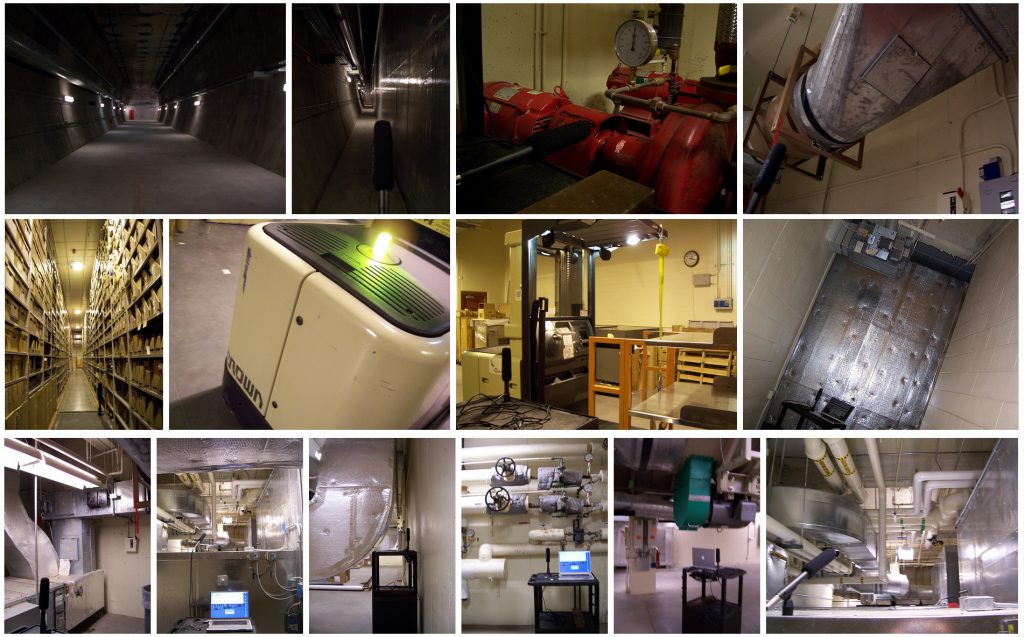
DS: Damian; what made you decide to release this collection of recordings now?
Damian Kastbauer: I used to have this crazy job helping to run the facilities at a library archive and, as a result, had access to some pretty interesting spaces. In my daily travels I would make my way through the entire facility and past countless machines and climate control systems that helped maintain the temperature and humidity inside the building. It was early in my audio career and my equipment wasn’t the best, but I knew I needed to take advantage of the incredible sounds I came across! So one day I set out on an expedition and acquired as many unique examples of spinning, rotating, droning, moaning, pumping, and flumping sounds as I could. My rig at the time was nothing fancy: an old powerbook and a Rode NTG2 was the extent of my recording gear at the time (this was in the days before teeny-tiny portable recorders or the pervasiveness of personal devices).
I don’t do much content creation as a technical sound designer for games, but (like most people) I’ve amassed a personal library based on my love of sound. These recordings represent a unique phase of my life and when Jordan mentioned he was working on a new library, I asked if he might be interested in packaging it with my collection of mono machines. The idea was for it to be a “bonus” distributed as part of his library and a way to get the sounds off my HDD and into the hands of people who could use them. I’m a huge fan of boutique sound libraries that have been cultivated and curated by recordists and sound designers over the past years. Not only do they provide rich content for people to work with, they represent a passion and dedication to listening to the minutia of sounds in our world. My hope is that MONO MACHINES can find a place in people’s designs that communicates some of the passion I have for sound and resonates with my unique experience recording this library.
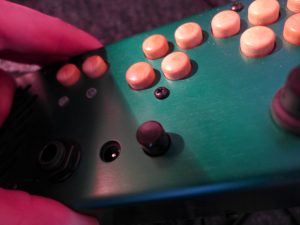
DS: What was a sound/subject you recorded on your downtime that saved your butt on a later project?
JF: Interestingly I have already used some of the recordings that later went into this collection in an iOS video game. It just so happened that I needed to create some UI sounds and I had just started recording some of the buttons and clicks and I had to use em right away. They ended up being perfect for the visual style. As for other stuff, It happens all the time when you least expect it. Even recordings I have made on a whim, not for any library release, will come around in a year and be needed. Here’s a weird example: at one of my old apartments some painters came in to strip the ceiling of the apartment below mine, and they were making this scraping sound through my floor. I recorded it from my vantage point, just because it was weird, and I am using in a game right now (unless the sound gets cut!). With the size of portable recorders now, there is just no reason not to have one around most of the time, and I have gotten plenty of usable material out the built-in mics on some of those.
DS: Damian; do you think your earlier field recording experience helped you in your current role as Technical Sound Designer to interface with Sound Designers?
DK: My experience as an active listener, and especially listening through the amplified lens of a microphone when field recording, without a doubt has informed my role as a technical sound designer. Recording and listening to the world is an inspiration for developing systems to playback different elements of a particular sound. While recording buffalo in central Wisconsin I got caught up imagining all of the individual randomized sounds it would take to create a dynamic aural reproduction; the heavy breaking, fly buzzing, tail swishing, hoof stamping and occasional grunting swiftly turned the “simple” sound captured with a microphone into a buffalo symphony. Separating different components into variations, designing a randomized intermittent playback system, throwing together some parameters to control things like: breathing speed or number of flies, and next thing you know you’re conducting buffalo sounds for your next game!
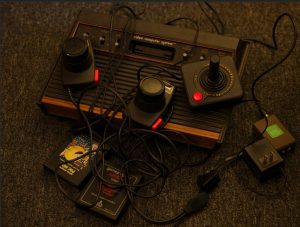
DS: Jordan; this is your fourth library so we must assume you enjoy making indie sfx libraries. Any plans for more in the future?
JF: I live in Columbus, Ohio, and in the surrounding area we have at least a dozen metro parks of varying size. I have been wanting to go out and investigate the noise pollution on those long trails and see if I could record a large collection of ambiences from Ohio over various seasons. It might even be a good opportunity to bring some M/S recording into the JFFX archives. That was one idea that has been kicking around. The libraries are something I do on the side at the moment, so it is always time permitting.
DS: What were some of the more interesting or unique subjects on this library you recorded?
JF: I could keep recording this stuff forever, I have always enjoyed detailed foley work. In the existing material I was pleasantly surprised at some of the sounds that came out of my old Atari console and accessories. The hollow switches, plugging the carts in and out, and the crazy rattle sounds inside the cartridges themselves. I also loved the zipper sound on the old bowling bag I took from my grandmother’s house, they don’t tend make zippers that thick anymore.
DS: What gear did you use to record the libraries?
JF: For this studio work, my rig was pretty simple. Microphones used were a Rode NTG-3, and a Schoeps CMC-5 + MK4 capsule. Depending on where I was recording they were run through a Tascam DR-100, or a MOTU 828 interface.
DS: Thats all fairly attainable gear for someone on a budget. It’s nice to see quality libraries being made with sub $2,000 gear (I also have the NTG-3 and use it constantly). Do you feel that your current field recording setup gets you everything you need?
JF: It depends on your needs. I don’t have the equipment to be very helpful at a modern gun recording session for example. But if I need to go out and get a specific sound, I can absolutely do that with a 2 track recorder, a couple of all-in-one portable recorders, a couple of good mono mics (shotgun, cardioid), and an NT4 (X/Y Stereo). I also borrow equipment if I have bigger needs, having some audio friends nearby allows you to buy a little less at first. I will borrow some advice that Michael Raphael of Rabbit Ears Audio gave me when I asked him about his Cooper pre-amps. Invest in the microphones first. There is a lot of talk about pre-amps and noise floors and how you have to have Sound Devices recorders, and while they are certainly amazing pre-amps, the microphones you plug into it matter more. My next buy will be a figure-8 mic to complete my very portable Mid/Side rig, and with that I’ll be able to do just about anything.
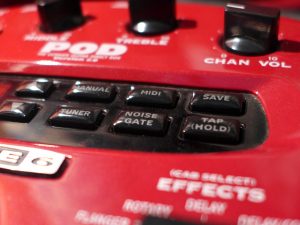
DS: What are some games/film/tv you have noticed with great Buttons, Gear, Equipment and Machine sounds?
JF: The most recent couple of Mission Impossible films have a lot of equipment, gadgets, climbing gear, etc in them that all sound great. I also found the newest Star Trek film pretty intimidating, audio-wise, when I saw it in the theatre, that’s a good sounding film. In terms of games, there are tons of games with brilliant UI sounds in them, Damian and I even talked about doing a sound study about that at one point. With so many animated menus and telemetry stuff nowadays people are doing a lot more with it. The iOS puzzle game “The Room” is a game that had to use tons of switches and latches by it’s very design all over the game.
DS: Thanks to both of you for putting this library together and talking with us about it!
You can find Jordan Fehr and Damian Kastbauer on their websites. And make sure to pick up Buttons, Gear, Equipment and Ambiences.
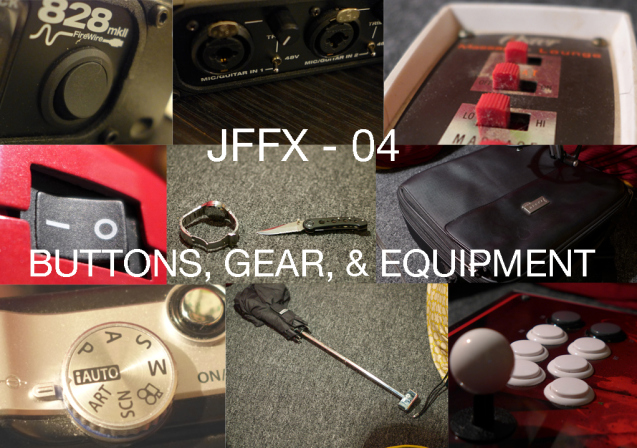
[…] Read the whole interview here: https://designingsound.org/2013/10/jordanfehrfx-jffx-04-interview-with-jordan-fehr-and-damian-kastbau… […]